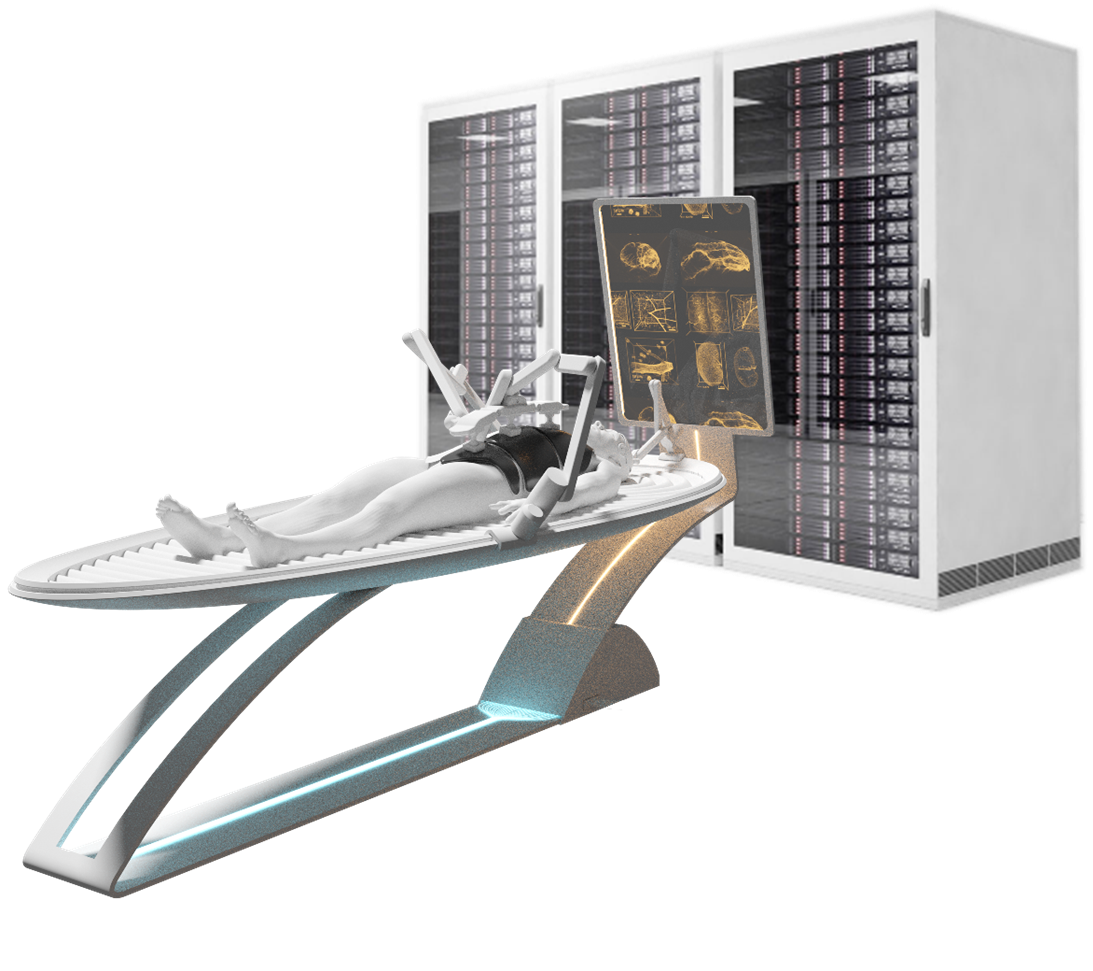Ze[US]: revolutionizing medical imaging with ultrasound technology
The Ze[US] project, led by Inserm and funded as part of the France 2030 program, is one of the most ambitious ever launched in medical imaging. Led by Inserm researcher Mickaël Tanter, the project aims to revolutionize the use of ultrasound by developing a research prototype capable of capturing, processing and analyzing colossal quantities of data in real time. Its name, Ze[US], for Zetta UltraSound, reflects both the power of the system and its objective: to make the invisible in the human body visible.
Ze[US] project challenges
Ze[US]’s ambition is to transform ultrasound imaging into an unprecedented technology, enabling high-resolution visualization of all the main organs of the human body at extremely fast rates. The aim is to enhance the functionality of imaging devices to film, for example, the entire human blood network down to its most minute components, such as capillaries. This unique research prototype will also enable us to design the ultrasound scanners of tomorrow, by integrating these technological advances into the medical instruments we usually use.
Today, ultrasound is performed by specialists who manually move a probe over precise areas of the body, requiring great expertise and making diagnosis operator-dependent. Thanks to its thousands of sensors and electronic cards, the Ze[US] prototype will eliminate this dependency, enabling instant detection of ultra-detailed images of all organs. As a result, no area will be overlooked, and no specific qualification will be required to perform a complete and reliable ultrasound scan, guaranteeing safer and more comprehensive care.
Technological challenges
The implementation of the Ze[US] project involves a number of technological challenges. The first is to design very high-density ultrasonic sensors covering several hundred square centimeters, capable of covering an entire organ in a single acquisition, whereas current ultrasound scanners generally use only a hundred or so elements. The second challenge is to develop a device capable of simultaneously managing tens of thousands of sensors, generating a gigantic flow of information of over a Terabit per second. Finally, sufficient computing power must be created to process this massive data in real time and retain only the essential information, thus limiting storage requirements.
To meet these challenges, several French companies have been selected to take part in the project and contribute to the country’s autonomy in medical research and innovation.
How could Ze[US] improve patient care?
In particular, Ze[US] technology will make it possible to image and monitor variations in blood flow in the entire vascular network of organs, from the largest artery down to vessels just a few microns in size. Thanks to its unique capacity for quantitative micro-angiography, Ze[US] could revolutionize the early detection of tumors, the monitoring of vascular pathologies, diabetes and neurovascular diseases, as well as the imaging of coronary arteries and strokes. For example, by accurately detecting the first signs of tumor development, Ze[US] could significantly improve early cancer detection and enable earlier intervention in medical management.
However, it is important to emphasize that Ze[US] is an advanced research device and is not intended to become a clinically available piece of equipment in all hospitals in the short term. It will, however, contribute to the design of new generations of more compact, clinically usable devices, also known as “mini Ze[US]”, which will be able to meet concrete medical needs such as monitoring the brain function of newborns or the early diagnosis of certain diseases.
What are the next development steps?
Mickael Tanter: The project is progressing apace. This year, we will finalize the manufacture of the first electronic boards capable of simultaneously controlling a large number of sensors, as well as new-generation ultrasound probes. Next year, we’ll have a complete system integrating all the technological building blocks we’ve developed, with a total of 12,000 sensors. This technological core will then be ready for the research test phase.
At the same time, we are already preparing for the “mini Ze[US]” to enter the clinical phase. Within the next four years, our ambition is to integrate Ze[US] technology into clinical trials, in order to obtain unprecedented data on the functioning of the human body, while optimizing the design of future ultrasound imaging systems.
Sources
This article has been adapted from content published by Inserm. Find the source article and all references on the Inserm website.

